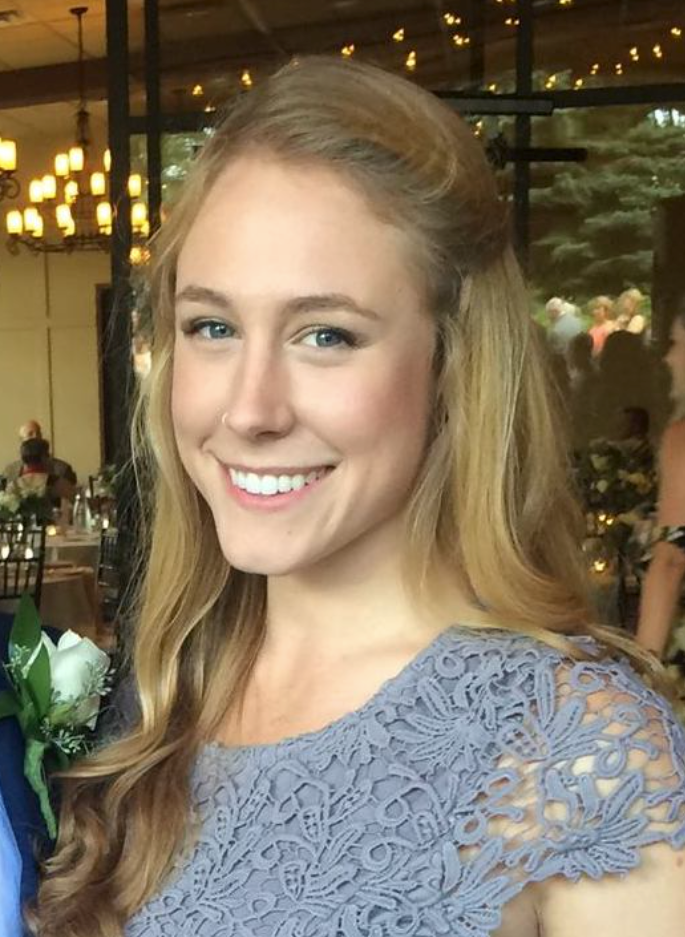As Pharma Continues to Adapt to AI, the POSA Standard will Need to Equally Adapt
U.S. patent law will have to adapt to the use of AI in the life sciences industry.
Bruce M. Wexler

Justin T. Fleischacker

Nicole M. Dlug

In just the last two years, we have seen exponentially fast growth in the efforts made by the pharmaceutical industry to explore and adopt artificial intelligence (AI) into their businesses. These ventures include clinical trial design, conduct, and analysis, as well as earlier stage work such as drug design, drug repurposing, and drug screening, among many other opportunities.U.S. patent law, with over 200 years of history in adapting to previously unimaginable technologies, has been and will continue to be put to the test as life sciences and technology continue to converge. In this article, we highlight what is—or at least should be—on everyone’s minds as we soar forward.
Numerous pharma companies are reporting integration of AI
At the prompting of Congress, the U.S. Patent and Trademark Office (PTO) conducted a study that questioned the impact of patent eligibility jurisprudence on particular technology fields, including quantum computing, AI, precision medicine, diagnostic methods, and pharmaceutical treatments. The PTO issued a report in June 2022 including discussions by pharmaceutical companies about how they are actively looking for opportunities to utilize AI in advancing the biopharmaceutical industry.1 The report, for example, discussed initiatives by Genentech, Novartis, and Johnson & Johnson, among others. The overall tenor of the report was that increased use of AI with available data will help fuel advancements in the research, pharmaceutical, and healthcare spaces while being economically beneficial in furthering our approach to medicine.2
In two more recent posts, the drug companies Merck and Eisai each announced AI-based initiatives.3 Merck’s announcement discussed the formation of the Merck Digital Sciences Studio (MDSS), which is said to “enable the generation of innovative technologies for drug discovery and development.” Eisai announced a new research and development organization that will focus on Deep Human Biology Learning, aiming to “create innovative and efficient next-generation drug discovery concepts” using AI.4
In short, we are no longer discussing whether AI-based changes will be seen in the pharmaceutical industry; rather, these changes are here and they will continue to rapidly evolve the pharmaceutical industry. So what does this new reality mean for patent law?
Changes in AI technologies will fuel patent law adaptations
Congress passed the first patent statute in 1790. Since its inception over 200 years ago, the law has adapted to reflect changing societal and scientific advancements, both through statutory change, and through court rulings interpreting and applying the patent law. As part of this process, courts have had to fit modern phenomena within the principles and framework of the patent law. As we begin this new wave with AI, we will see how the laws are equipped to handle it.
Patent eligibility
A threshold issue for patent law is determining what may be eligible for patent protection. Generally speaking, ideas, laws of nature, and natural phenomenon cannot be patented, though their useful applications may be.5 Patent eligibility has never followed a bright line rule, but rather is based in foundational principles and an exploration of the gray areas created by these principles. However, in 1994, the Federal Circuit established a bright line rule that any mention of a computer in a patent claim rendered it eligible.6 In a thoughtful dissent, Chief Judge Archer foreshadowed the problems to come, and explained the principles that should drive patent eligibility.7 Chief Judge Archer’s predictions came true and, as the dotcom bubble grew, a Pandora’s box opened to flood the intellectual property law with countless obstructive patents for ways of doing business. It took 20 years for the Supreme Court to eliminate this precarious business method patent anomaly, adopting a test closely tracking Chief Judge Archer’s dissent, and leaving the courts to apply a set of principles to inventions, including now AI-based inventions, rather than bright-line rules.8 Recently, the Supreme Court showed it is not eager to revisit this precedent.9
Inventors and hypothethical persons of ordinary skill in the art and their persepctives
We are presently in the world where humans frequently use narrow AI to achieve goals, and we are progressively moving towards a world where general AI is more prevalent. Someday, general AI will be in common use, and several years beyond that, we will have artificial superintelligence; however, we will reserve further discussion on these topics for now. As discussed above, to achieve a patent-eligible invention, inventors with access to AI must apply algorithms to achieve a useful result, and cannot patent an algorithm itself (recognizing the distinction may be gray). Once through the gate of eligibility, however, other conditions also apply. For example, in their patents, inventors must enable, through their patent disclosures, hypothetical persons of ordinary skill in the art (POSAs) to practice what they are claiming as their AI-based invention.10 And that POSA, before knowing of the invention, must not have thought it would have been an obvious advance based on their knowledge of things like pre-existing publications and patents (i.e., not the confidential, internal information available to the inventor).11 Companies filing for patents now must bear these and other principles in mind as they create the patents that will later be subject to challenge in enforcement actions. Similarly, companies considering transactions will need to be thinking about the strength of exclusivity available through various patents and patent applications, as well as issues of who owns what rights.
How much and what kind of disclosure will be needed?
In determining whether patent disclosures are sufficiently enabling, POSAs can consider both the prior art and read and study the actual patent.12 With the increased use of AI, there is also an increased wealth of information for POSAs to consider.The ramifications of this increased information is at least twofold. One, it may provide more opportunities for inventors to argue the disclosure is enabling and, two, it may increase what is considered “well-known in the art” to supplement a patent’s disclosure. Further, the use of AI may also reshape certain aspects of the enablement analysis, such as what is considered undue experimentation. In other words, AI may alter the perception of what is considered a permissible amount of experimentation.
There also may be challenges in providing an enabling disclosure due to the nature of AI. Aside from the established parameters dictated to the AI, the AI logic can be somewhat unknown and the output unpredictable. Some AI inventions, depending on what is claimed, could tread into areas that are “black box” in nature where it may be a challenge to determine how AI is making decisions, which makes it difficult to provide a disclosure that ensures repeatability. And if the inventor is utilizing AI to analyze their confidential, internal information, and the claims require access to this information to perform the invention, there could be further challenges. As concrete examples of AI patents are prosecuted, applicants will need to ensure they provide sufficient disclosures to practice the invention, including potentially the data and parameters of the AI system along with a representative number of species to increase the potential for repeatability.13
Are inventions nonobvious?
As noted above, AI usage may produce more information that is accessible to a POSA, which could then affect the determination of what would or would not have been obvious to such a POSA. That said, POSAs are not the inventors; they are persons of ordinary—not extraordinary—skill and, for the foreseeable future, will be limited to humans. Those POSAs, however, are permitted access to tools available to such an ordinary artisan, and, to the extent AI can be analogized to such a tool, POSAs may have access to AI and the resulting benefits, depending on the industry. Yet, the obviousness analysis generally depends on publicly available prior art; therefore, if a POSA does not have access to the information the inventor had when creating the invention, it is possible the POSA would not have found the subject matter obvious.
Inventorship
A hot topic now is the question of who is entitled to be named as an inventor, and whether a situation will arise in which AI is permitted to be named as an inventor. In the U.S., the law is clear that AI cannot be named an inventor.14 Accordingly, patent applications can be filed in the names of human inventors applying AI as a tool to achieve useful results. As with every patent, patentability will depend on what the subject matter of the patent is and what the inventor chooses to delineate as the claimed invention. As the courts continue to deal with actual examples of AI-related patents in litigation, those fact patterns will create an evolving body of law useful for new situations. This is, to some extent, not unlike the way the patent law evolved to deal with complex inventions in biotechnology that were originally very difficult, if not impossible, to describe with great structural detail.
We are in rapidly changing times that are presenting new issues at a breakneck pace. It can seem overwhelming to try to predict and analyze all the future issues we will be seeing with AI. The key, therefore, will be to focus on concrete situations with actual facts, while being mindful of the larger implications. And stay buckled up as we race forward and upward through the exponential curve of change.
Resources
- Patent Eligible Subject Matter:Public Views on the Current Jurisprudence in the United States, USPTO (June 2022).
- See generally id. at 31.
- Reform of Global Research and Development Organization and Changes of Corporate Officers, Eisai Co. Ltd. (July 15, 2022), https://www.eisai.com/news/2022/pdf/enews202255pdf.pdf;Merck Announces the Launch of the Merck Digital Sciences Studio to Help Healthcare Startups Quickly Bring their Innovations to Market, Merck (June 29, 2022), https://www.merck.com/news/merck-announces-the-launch-of-the-merck-digital-sciences-studio-to-help-healthcare-startups-quickly-bring-their-innovations-to-market/.
- Id.
- See Alice Corp. Pty. Ltd. v. CLS Bank Int’l, 573 U.S. 208 (2014).
- In re Alappat, 33 F.3d 1526 (Fed. Cir. 1994)
- See id. at 1551-68 (Archer, C.J., dissenting).
- See Alice, 573 U.S. at 218-26.
- Am. Axle & Mfg., Inc. v. Neapco Holdings LLC, 939 F.3d 1355 (Fed. Cir. 2019), modified, 967 F.3d 1285 (Fed. Cir. 2020), cert. denied 2022 WL 2347622 (U.S. June 30, 2022) (No. 92-212).
- See Amgen v. Sanofi, 987 F.3d 1080 (Fed. Cir. 2021).
- See KSR Int’l Co. v. Teleflex Inc., 550 U.S. 398 (2007).
- Amgen, 987 F.3d at 1084.
- See Ariad Pharm., Inc. v. Eli Lilly and Co., 598 F.3d 1336 (Fed. Cir. 2010).
- See Thaler v. Vidal, No. 21-2347, 2022 WL 3130863, at *2 (Fed. Cir. 2022) (“[T]here is no ambiguity: the Patent Act requires that inventors must be natural persons; that is, human beings.”).
Is Artificial Intelligence a ‘Product’? Products Liability Implications for AI-Based Products
April 10th 2025As the physical products we use evolve to become increasingly complex, traditional products liability frameworks may not always fit to provide remedies for harm that can result from using novel product types.